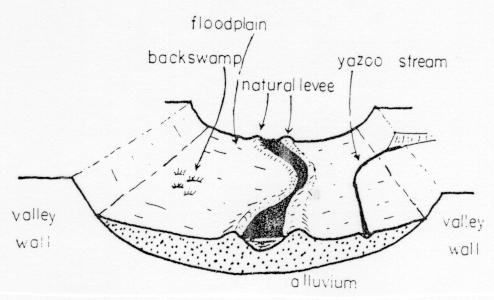Answer: Introduction The Behavioral Approach in human geography revolutionized the study of spatial phenomena by centering on human cognition, decision-making, and subjective experiences. In doing so, it challenged earlier frameworks—most notably, the dominant positivist paradigm—which focused exclusively on observable and …
Answer: Introduction The latitudinal gradient in species richness is one of the most conspicuous geographic trends in biodiversity. It refers to the pattern where tropical regions near the equator generally harbor far more species than temperate and polar regions. This …
Answer: What Is a Yazoo Stream? A Yazoo stream is a tributary that, instead of joining a major river directly, is forced to flow parallel to the river’s course for a considerable distance. This phenomenon occurs because natural levees—raised embankments …
Answer: Introduction Carbon neutrality—achieving a balance between emitted and absorbed carbon dioxide—is critical for mitigating climate change and ensuring environmental sustainability. As global temperatures rise, extreme weather events become more frequent, and ecosystems face unprecedented stress, reducing greenhouse gas emissions …
Answer: Perception, Attitude, Value, and Emotion (PAVE) in Biodiversity and Sustainable Environmental Conservation Introduction The components of Perception, Attitude, Value, and Emotion (PAVE) underpin how societies interact with nature and influence biodiversity conservation. These psychological and cultural dimensions determine whether …
Biogeography – Soil – Soil Degradation Answer: Introduction The phrase “Soil erosion is creeping death” underscores the gradual yet irreversible degradation of soil through removal of its nutrient-rich top layer by wind, water, and anthropogenic activities. It reflects the slow …
Climatology – Air Masses – Weather Answer: Introduction An air mass is a large body of air with uniform temperature, humidity, and pressure characteristics, acquired from a source region. The concept was developed by Bjerknes and Solberg during the early …
Oceanography – Bottom topography of Ocean – Bottom topography of Indian Ocean Answer: Introduction The Indian Ocean, third largest among the world’s oceans, is bounded by Asia to the north, Africa to the west, Australia to the east, and merges …
Geography Optional – Climatology – Climate Classification Answer: Introduction Wladimir Köppen (1846–1940), a German climatologist, developed the Köppen Climate Classification in 1884 (revised in 1918 and 1936), integrating empirical temperature and precipitation data with vegetation zones. It remains one of …
Geomorphology / Plate Tectonic Theory / Mountain Building Answer: Introduction Mountain building (or orogenesis) refers to the geological processes responsible for the formation of mountain ranges, typically through tectonic forces such as plate convergence, folding, faulting, and volcanism. While earlier …









